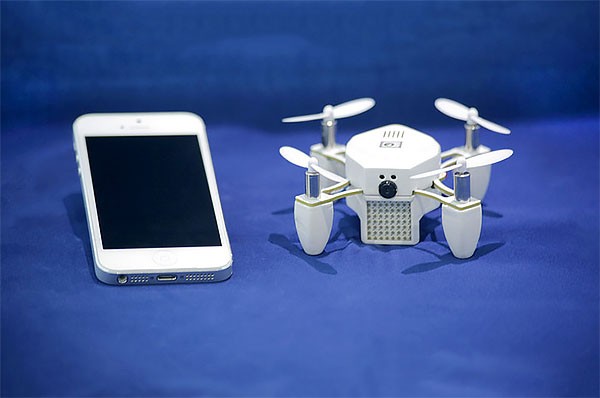
Journalism’s Latest Tech Fix: The Flying iPhone
In Hungary, where Gilberds is a visiting fellow at CMDS (Central European University), the embattled journalism sector is also coming up with creative ways around their structural problems. The government has regulated and purchased and hounded most of the mainstream media here, so aggressively co-opting the once-independent journalists that Freedom House, the International Committee for the Protection of Journalists, the European Union and United States government have all put Hungary on the downward spiral list for press freedom.
But in the midst of all that pressure, good journalists have emerged, using not only traditional document searches and data crunching but also drones that are essentially flying iPhones, to map the questionable shift of resources from the public treasury into the pockets of the favored few who are close to the Prime Minister. No fewer than four investigative news organizations have emerged in Hungary to track the land sales, phony foundations to launder money, castle purchases, massive stadium construction, and nontransparent government contracts landing in the hands of the inexperienced, the unqualified, and the unchallenged cronies of Viktor Orban.
We heard yesterday about how they are using drones, from atlatso.hu, perhaps the most established and famous of these investigative journalism ventures, headed by enfant terrible Tamas Bodoky. He has been known to take Hungarian authorities to the International Court of Human Rights in Strasbourg to get back his computer, confiscated by police during one spate of scandal stories, and to fight other government actions aimed at suppressing his investigative efforts.
The conversation at the Open Skies, Open Societies conference was about how small drones are being used by atlatso and others to make the invisible visible. They are part of a network of private, non-governmental drone users relying on remote-controlled devices like the Phantom quadcopter, a three-pound, kite-sized flying camera. This video shows some of what they are doing: http://english.atlatszo.hu/2016/05/09/drones-in-the-service-of-transparency-atlatszo-hu-releases-feature-film-on-new-investigative-technology/
“Dronalism,” as people are now calling journalism using drone-based video and data gathering, is the latest Big Thing proving that journalism is not only not dead, but it is morphing into ever more powerful forms. Marietta Le, an atlatso journalist, was denied access to Budapest maps by authorities citing copyright concerns. But now a privately-owned drone can cover city streets from the air, making possible a new map that is even more up to date, showing areas that the authorities might wish to keep secret.
Probably the most famous Hungarian dronalism came during the huge Budapest Internet Tax demonstration in October 2014, shot from a drone operated by CEU’s Austin Choi-Fitzpatrick, who now directs the Good Drone Lab at the University of San Diego.
The law is still murky about drones. Privacy and safety are legitimate, complex and important issues. For journalists, drones offer not just new reporting and visualization opportunities, but new tensions with governments. A reporter from another Hungarian investigative news organization, 444.hu, was confronted by police who confiscated his drone, when he was trying to document the extraordinary property development going on in the tiny town of Felscut, the beloved childhood home of Prime Minister Orban. The government had funded a $17 million new soccer stadium there that was bigger than the Lithuanian national stadium, even though the town has only 1,800 residents. The prime minister is a soccer fanatic. The stadium is about 20 feet from his country house. http://www.nytimes.com/2014/04/04/business/international/the-village-stadium-a-symbol-of-power-for-hungarys-premier.html?_r=0
A humanitarian network of private drone operators sprang up to help after the April 2015 Nepal earthquake, calling themselves the UAViators (UAVs are unmanned aerial vehicles, or drones.) Their drones flew below the cloud cover, enabling first responders to get real-time information to rescue teams. But the Nepalese government moved to limit the drones in the emergency-effected areas, for fear that “sensitive information might be leaked and pictures of valuable heritage sites (be taken) illegally.”
This week’s drone conference organizers, including CMDS at Central European University and the Good Drone Lab at the University of San Diego, suggested that civil society activists and journalists should step up now to work with policy-makers who will decide how and when private drones can be used in the future. If they are a hazard to aviation and privacy, there should be rules. No drone operator wants to collide with a first responder during a crisis. But drones are already a benefit to transparency and accountability, so there should also be rights. “As long as authorities are not willing to provide the data, we want to do it,” concluded Czech journalist Jan Indra.
The Good Drone Lab’s report on private drone use around the world is available at http://digital.sandiego.edu/gdl2016report/1/
